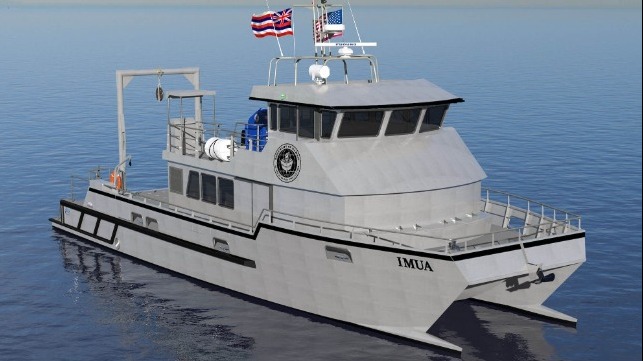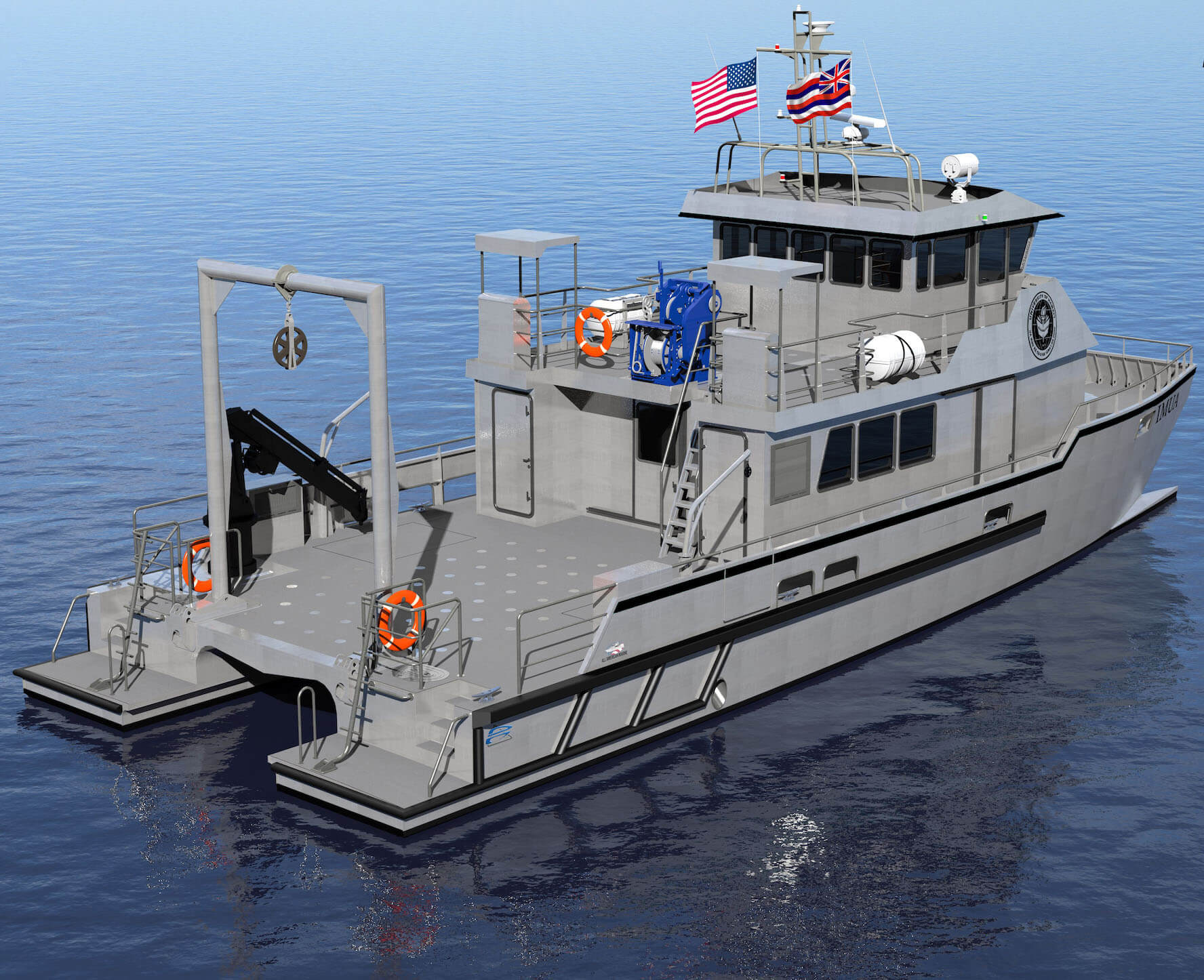Innovative Vessel Being Built for Hawaiian Marine Research

An innovative research vessel is being built for the University of Hawai?i at M?noa and the University of Hawai?i Foundation (UHF) on behalf of the Hawai’i Institute of Marine Biology (HIMB) to allow them to access and study marine environments in the Hawaiian Islands. The unique design of the vessel will be fundamental to meeting the University of Hawai’i’s research goals and according to the researchers, the knowledge gained from the science missions on this vessel will directly support the management and conservation of Hawai?i’s marine resources.
Construction is already underway at the All American Marine shipyard in Bellingham Bay, Washington. The vessel, which will measure 68.5 feet by 25 feet, features a semi-displacement aluminum catamaran hull that was developed by Nic de Waal of Teknicraft Design in Auckland, New Zealand. The new research vessel integrates the signature Teknicraft Design symmetrical and asymmetrical combined hull shape, bow wave piercer, and a patented hydrofoil-assisted hull design. The hull and hull components
are designed to break up wave action and ensure reduced drag while enhancing passenger comfort. This advanced hull shape was custom-designed using digital modeling and Computational Fluid Dynamics (CFD) analysis testing.
According to the shipyard, the dynamic hydrofoil-assisted hull design is proven to have an industry-leading low-wake wash energy and fuel economy. The main foil action reduces the power needed to maintain service speed, resulting in reduced fuel consumption and running costs that are significantly lower while also enhancing the softness of the ride, especially in choppy seas. The hydrofoil system consists of the main foil spanning the tunnel at the keel, forward of the center of gravity position, and two cantilever-type stern foils. The lift produced by the hydrofoil reduces the hull resistance while increasing speed and load-bearing capability.
The propulsion package includes two fixed pitch propellers, powered by twin Scania DI16, 082M, Tier 3 engines, rated at 800 mhp @ 2100 RPM. AAM says that this design will provide excellent fuel economy while also maintaining an estimated fully laden cruise speed of 22-24 knots and with a fuel-efficient minimum survey speed of 3 knots. With a large fuel capacity of 1800 gallons, this design will support a science team of 8 on offshore missions and 22 students/crew on shorter day excursions.

Onboard the vessel, scientists and crew have comfortable live-aboard quarters, large state-of-the-art wet and dry lab spaces, as well as a range of the latest oceanographic equipment in which to conduct a variety of missions. The vessel has been custom designed to support a diverse portfolio of science and outreach missions including advanced studies on marine megafauna, pelagic and coastal ecosystem research, oceanographic surveys, and K–12 learning experiences for up to 20 people.
“We are incredibly excited to be able to have a custom-built vessel for our environmentally driven research missions in and around the Hawaiian Islands,” said Carl Meyer, Ph.D., Fellow of the Institute of Biology (UK) and University of Hawai’i Researcher. “All American Marine understood our mission and provided a new design to meet our mission-specific needs. We are excited about the positive impacts this vessel will have for us, including a substantial increase in the abilities of our programs.”
The vessel is being constructed to US Coast Guard standards for service in waters where the range to the refuge is 150 nautical miles or less. It will operate as a multipurpose research vessel in the Hawaiian Waters and Offshore on Ocean Routes for a crew of up to 12.
The vessel is expected to will expand the University of Hawai?i’s environmentally focused research activities and will aid them with their conservation efforts in the Pacific. The institute sponsors a diverse portfolio of science and outreach missions including advanced studies on marine megafauna, pelagic and coastal ecosystem research, oceanographic surveys, and K through 12 learning experiences.
